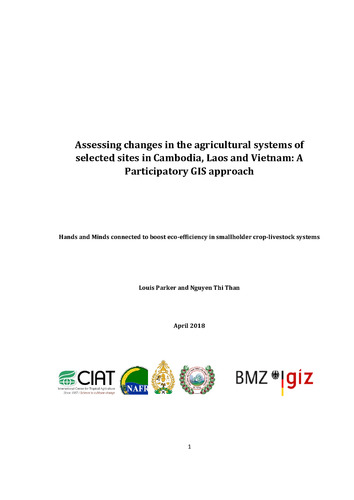Assessing changes in the agricultural systems of selected sites in Cambodia, Laos and Vietnam: A Participatory GIS approach
Abstract
Background: The Mekong River delta is a region undergoing rapid socio-economic and environmental changes. As part of the BMZ funded project, ‘Hands and Minds connected to boost Eco-efficiency in Smallholder Systems’ we have conducted an assessment to identify the changes in cropping systems occurring in specific project sites in Vietnam (Central Highlands), Cambodia (Ratanakiri Province) and Laos (Xiangkhouang Province). We have implemented a participatory GIS methodology to compile spatially referenced information on the changes occurring at the plot level for the period 2007-2017 and recorded information on the climatic and biophysical stresses present. We have also collected information on the household characteristics in order to better understand the context in which the cropping system changes are occurring.
Objective: i. To identify and describe the changes in the cropping systems from 2007 to 2017 occurring in the project sites ii. To collect descriptive data at the household and village level which can be used to better understand why the specific changes in cropping system are occurring and how these changes manifest themselves across the sites and surveyed farmers
Method: We implemented the survey on the commcare application using hand held tablets and used GPS to map the field plots of the households (between 78-94 Households for each country).
We used Geographic Information Systems (GIS) to store, analyse and present the data.
Conclusions
Overall we can see that the agricultural system in the Central Highlands, Vietnam, is largely orientated towards the market, with cash crops being produced since and notably before 2007. The changes in crop patterns is complex, but we can see an increase in the production of pepper and a reduction in coffee. Cambodia has seen a reduction in the forest and fallow plots with increases in the production of cash crops such as cassava. However, this is not uniform across all the villages, with Padal undergoing the most substantial increase in agricultural production, with forest and trees being replaced by cassava and cashew.
In Laos we can see an increase in the production of maize, particularly in Pa Khom village. We also see an expansion in the area of the tea in Or Anh village, a cash crop largely grown for export.

